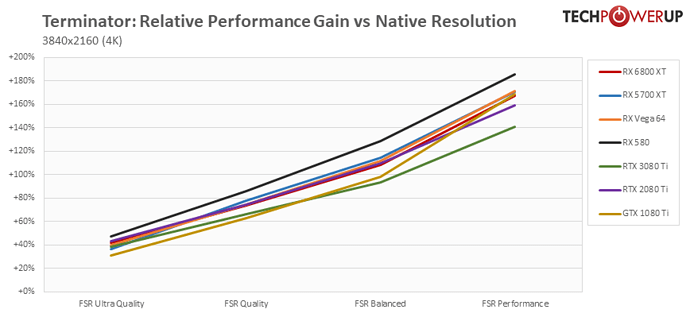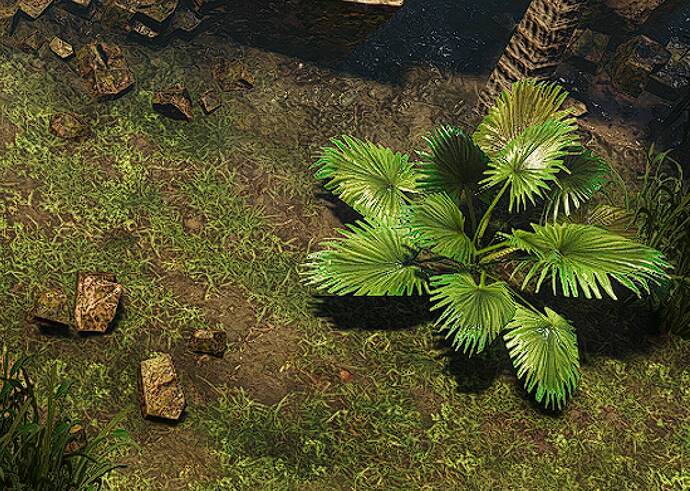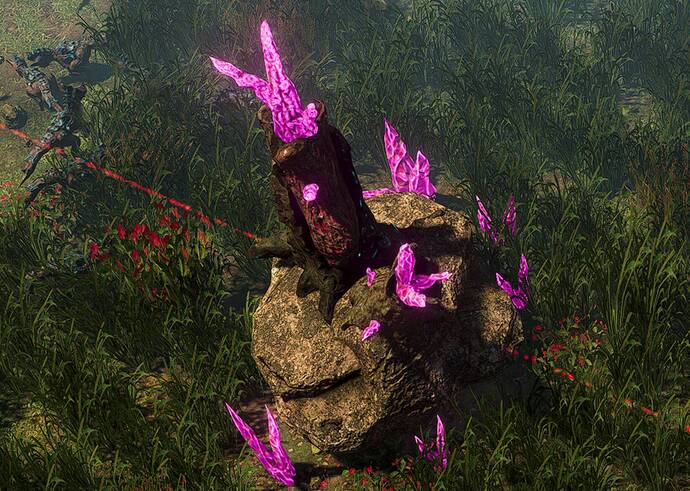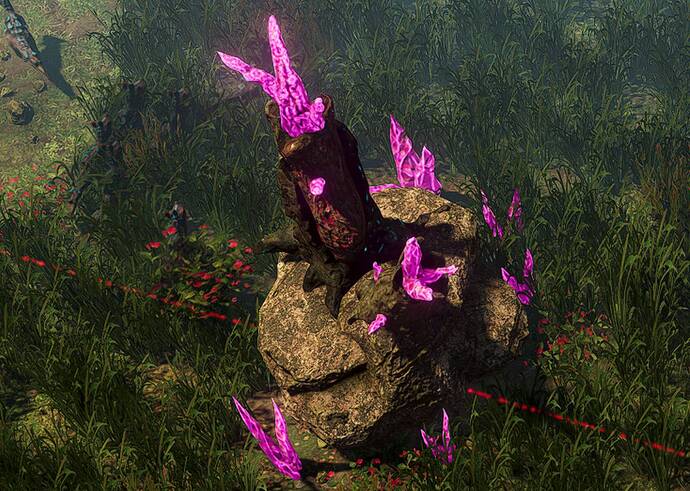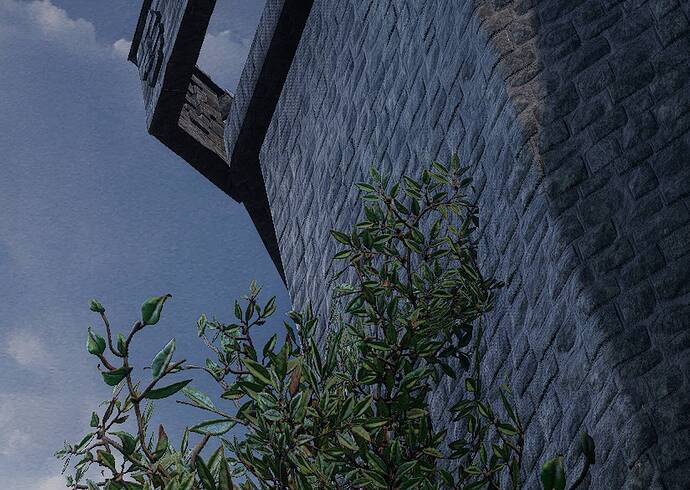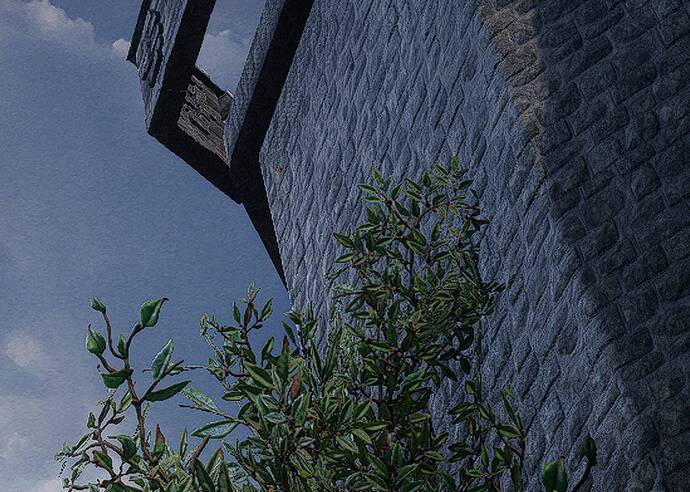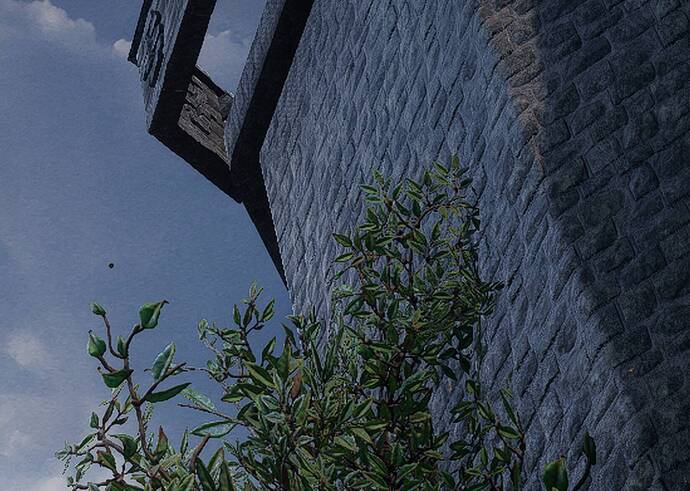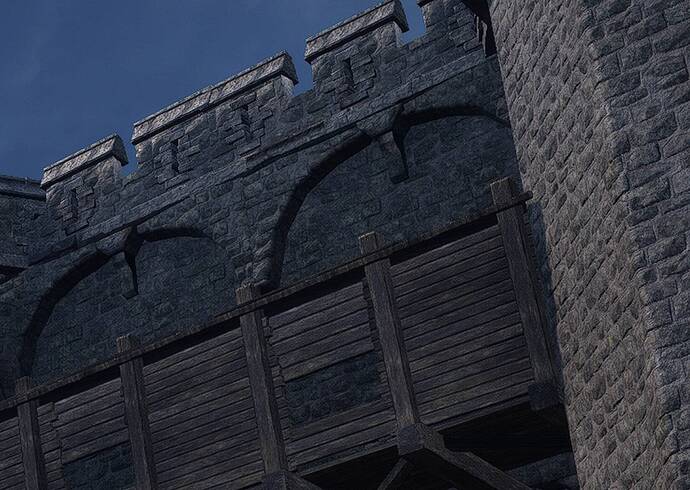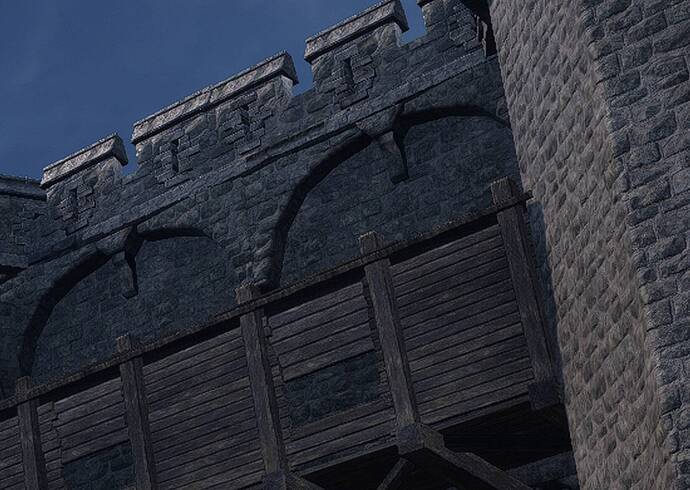For those with a sufficiently powerful GPU the FSR as well as the DLSS will not change anything since Flight Simulator is CPU bound. However, If it can be supported in VR it will be a game changer !
Exactly, VR + FSR would be awesome. And since FSR excels at keeping edges, avionics and other indicators should likely be fine. My poor 1080ti FE is still bravely trying very hard with the Quest 2 but a free FPS boost would be most welcome.
A free performance improvement in VR, and something that also works on XBOX at the same time. Win-win-win.
It would be really nice to take attention on this topic and increase the number of votes to make sure listing this istem on the wishlist ! Did ASOBO state anything about AMD FSR previously ?
Kind regards.
Unfortunately nothing so far, and they don’t seem very intent on supporting DLSS as well. They think the current anti-aliasing solution is good enough.
Here is more confirmation from the developer themselves, the game is Edge of Eternity.
https://twitter.com/zelerj/status/1407463045404712963
Implementing FSR takes about the same time as implementing CAS, which Asobo have already done.
~15% seems close to the Steam hardware surveys, but it might be way higher a number in the flight simulator genre with simmers. The latest Navigraph survey is showing ~85% simmers (or at least those who have answered the survey) are running NVidia hardware. Maybe not all RTX but much higher NVidia % than in the general gaming population.
As for FSR, when I look at the explanations and the videos/pictures side-by-side, it seems to me it is like something which is already done ages ago in the console emu scene. In other words:
- an edge enhancer like this very known one hqx - Wikipedia
- the CAS shader already implemented in FS2020 for boosting texture details via local contrast enhancement and edge sharpening.
This is different than DLSS which reconstructs details that didn’t exist and this explains in some of the latest videos I’ve seen why in “performance” mode it is looking blocky and blurry ( https://www.youtube.com/watch?v=_JR8MsJcTBU )
When looking closely at the comparison between native 4K and performance mode (i.e. 1K render → 4K display), you can see typical edges you’d get with pixel art scaling algorithms: Pixel-art scaling algorithms - Wikipedia
This will probably be good enough for 2D, but in VR I’m really wondering how good will it be because every pixel is really magnified in front of the eyes and any such artifact is more prominently visible.
I can’t wait trying it out with the DX12 release.
Here is more devs speaking of the relative ease of dropping in FSR.
After those short implementation time statements I would really like to hear a solid explanation about this technique. Considering the ASOBO and AMD relationship (CAS) I want to believe some future miracles to happen. I hope we may have a chance to ask this during next Q&A.
Kind regards.
It looks like there are indeed some ideas in FSR which are looking like the ones commonly used in Pixel-Art scaling algorithms (see my post above): AMD FidelityFX Super Resolution 1 (FSR 1) - AMD GPUOpen
NB: it is not the same, but the image analysis idea based on delta gradients from neighboring pixels seems quite similar to me.
There is another element though which is probably nothing, or not much, but:
Highly optimized
- FSR is hand-optimized for fast performance across a wide variety of GPUs1.
AMD FidelityFX Super Resolution is supported on the following AMD products: AMD Radeon™ RX 6000, RX 5000, RX 500, RX 480, RX 470, RX 460, RX Vega Series graphics cards & all AMD Ryzen™ Processors with Radeon™ Graphics. AMD does not provide technical or warranty support for AMD FidelityFX Super Resolution enablement on other vendor’s graphics cards. GD-187
This tells me FSR can run on any of the GPUs they are listing, but it is fine tuned for AMD hardware first and foremost. I don’t expect this to make any significant difference when using a high end Nvidia card, but it might on the lower end of the spectrum.
Another feature which might help for ensuring the Xbox version of FS2020 will maintain 30fps at 4K:
In addition to fixed scaling, FSR may be used in “arbitrary scaling” mode, whereby any area scale factor between 1x and 4x is supported. This mode is typically used for Dynamic Resolution Scaling, whereby source resolution is determined by a fixed performance budget to achieve a minimum frame rate.
Let’s bring it on so that we can all see for ourselves!
The rendering overhead seems to be fairly low when comparing FSRs internal resolution to it’s native counterpart. Hardware Unboxed had it benchmarked on 8 GPUs, from RX570 to RX6800XT and GTX1070Ti to RTX3080, with FSR from 1080p performance mode to 4K ultra quality and native.
Link to that section here; https://www.youtube.com/watch?v=yFZAo6xItOI&t=1475s
And in image form from TechPowerUp
but it is fine tuned for AMD hardware first and foremost
The improvements look to be pretty equal across the board for both brands, so I don’t really know what “fine tuning” there really is to do. FSR is losing 10% overhead at most when comparing 4K @ quality FSR (1440p internal) to 1440p native, with AMD is ‘losing’ more percentage wise than Nvidia if anything. Slower cards like the RX570 see the smallest improvements.
Gamers Nexus benchmarked it on the 5700G APU (ZEN3+RDNA2 chip) and it still made significant gains, however it did have a 15% overhead. Sounds like the overhead is directly related to total performance (surprise surprise).
All things considered, it seems super easy to implement and we’d all love Asobo to add it to the sim. It will give a lot of people the extra performance bump to push for higher resolutions - and more performance overall if they can use CPU cores more efficiently.
Still need to push it up for the Dev Q&A so they’d at the very least acknowledge it’s existence ![]()
Go vote if you haven’t yet! https://forums.flightsimulator.com/t/is-support-for-amd-new-fsr-technology-planned/408234
The temporal upscaling that is already built into the game would be leaps better than AMD FSR which only analyzes single frames.
I encourage everyone to read DF’s analysis (their YT video goes into in even more detail). If you think DF have bias against AMD you haven’t read and watched enough of DF, they analysis are know for incredible detail and objectivity.
They used to claim that DLSS 1.0 looked close to or better than native rendering. They are also generally quite biased towards TAA and other temporal methods.
The current in-game TAAU is fairly good but quite buggy, and I’ve seen a lot better in other games. FSR complements existing anti-aliasing solutions, it does not come with its own. Considering how easy it is to implement, I see no reason why they should not.
The fact that DF manually edits the game files to enable a hidden TAAU, breaking the rest of the rendering pipeline and claiming TAAU looks sharper because the DoF (a character blur filter in Kingshunt’s case) process no longer works, makes their argument come crashing down. They’ve also paid zero attention to FSRs main focus, being performance gain vs quality loss.
would be leaps better than AMD FSR which only analyzes single frames
One of FSRs strong points is precisely that; it doesn’t need TAA(U) or multiple samples. It has zero ghosting, resampling or smearing as a result of that. Like ChaoticSplendid said, the current in-sim TAAU is good in some ways, like static images, but bad in others, like a single lightning flash (or strobe lights, moving shadows, etc). Those completely destroy it’s quality and it’ll have to resample from scratch to get back to it’s details again.
The current TAA also removes most small, moving details like raindrops outside and on the plane’s windows, so in that case it even loses image quality.
I looked into the anti-aliasing techniques, and realised the TAA technique is what is causing effects like these, which have been bothering me for a some time now:

(Behind the tail and APU you can see stripes from where the tail was a frame ago. Most noticeable on multiplayer traffic going fast, zoomed in with the drone camera)
From a quick test in EDDF with all three AA techniques, only TAA showed these effects.
I’m not advanced enough with the techniques used here, and I do not know if this is a bug or a result of the technology used.
Curious as to how this would affect the TAAU technology earlier mentioned in this thread, and I suspect that FSR would not suffer from this as it is on a single-frame basis?
I agree and it is even unbearable in VR regarding road traffic (see videos):
[BUG/FEATURE] TAA is transforming road traffic into ghosts (self-cancelling moving pixels) - #3 by CptLucky8
However if I understand this correctly, FSR is a post-process scaling technique post TAA. If this is the case, any TAA artifacts won’t magically disappear with FSR either and could be exemplified instead.
Correct, FSR is a post-AA effect but comes before all other post-process effects like chromatic aberration, film noise etc. TAA’s artifacts would indeed be amplified by it, but it’s not required for FSR to function. In theory any AA or none at all will work just fine, although the better the AA is and the cleaner the ‘pre-FSR’ image is, the better the final result will be.
Indeed, FSR is probably not going to fix the artifacts and some of the temporal instability caused by the standard TAA, but what I’m thinking is that it could eliminate the extra artifacts caused by the TAAU, since it will be upscaling an anti-aliased image rather than upsampling it.
My biggest annoyances with the TAAU is that it does not do anything for glass displays (especially at 1080p, anything below 100% render scale causes them to look totally unreadable), and switching between views is really jarring. After one or two frames, it seems to be collecting information from older frames which distort the image rather visibly, and it doesn’t go away until the camera starts panning.
Of course, if they update the TAAU solution in the future to reduce the impact of those issues that would be very good, but until then, they could easily implement FSR to potentially eliminate them. Also, even though there is definitely an overhead with FSR, there is actually a pretty big one with the current TAAU as well, so performance would likely remain the same.
Also to add to this request, someone demonstrated Dota 2 with FSR on a GTX 650, which is the nearly decade-old Kepler architecture. The potential FSR userbase looks to be huge.
So, I just played around with FSR in the free demos for Kingshunt and Riftbreaker, and found something interesting for the higher end of GPUs - possibly VR simmers. You can use a virtual resolution higher than your display’s resolution (5120x2880 (5k) for a 3840x2160 (4k) monitor in my case) and use FSR to render that virtual resolution at something lower. I don’t think this applies for render scale, only for the selected in-game resolution. 5k at FSRs lowest setting would be 1440p internally, or what the ‘quality’ setting would be for 4k.
As it turns out, the final image for 5k has less noise and edges are a little cleaner than the 4k image, with identical framerates (100 vs 101 fps). I’m not exactly sure how the scaling algorithm works, but it somehow works better at cleaning up artifacting on the 5k image, while both started at the same base resolution.
So then I tried 5k with FSR on ‘quality’, giving it an internal resolution of 3414x1920 - Not quite 4k, but close. This resulted in an almost supersampled looking image when displayed on a 4k monitor, smoothed edges while maintaining fine details. This could be set up as a TAA alternative or almost-supersampled image without performance loss, if your GPU is good enough to comfortably run high resolutions already. It runs about the same as native 4k while looking a bit cleaner.
The strangest part is, 4k @ Ultra quality (which in itself is almost like native) looks identical to 5k @ performance, while the latter starts at a lower base resolution - and we’re talking extreme pixel peeping to spot even the slightest differences. It’s definitely noticeable that the 5k image runs better though.
I’ll probably stick with the 5k virtual resolution and combining it with FSRs Performance mode if it becomes available. The implementation can vary from game to game, but it seems to get better already by just tinkering with it!
this looks like it is working good!
It would be great you’d share some screenshots too, because I think this could help to “see” the differences you’re describing and probably give a better understanding of all this?!
That was the plan! It became a bit of a picture dump to compare it back-to-back, but here goes. The forum’s compression likely makes it even harder to spot differences, it’s difficult as it is already. I’ll upload the pictures somewhere else if need be.
Tested resolutions/settings, both ‘pairs’ run roughly the same:
4K Native - 3840x2160
5K Quality - 3414x1920 internal
4K Quality - 2560x1440 internal
5K Performance - 2560x1440 internal
Note: Riftbreaker uses a forced TXAA
Kingshunt AA was set to low for these comparisons - looks like it’s turned off or is a very mild FXAA
